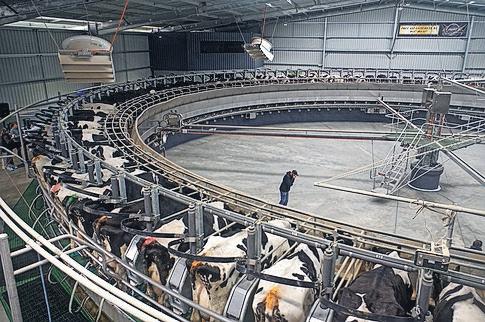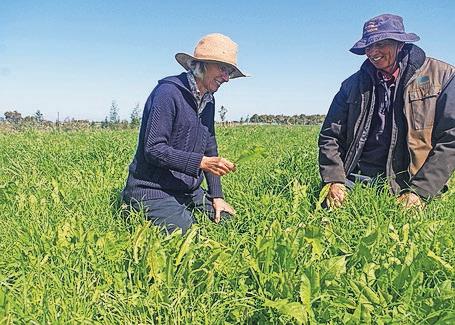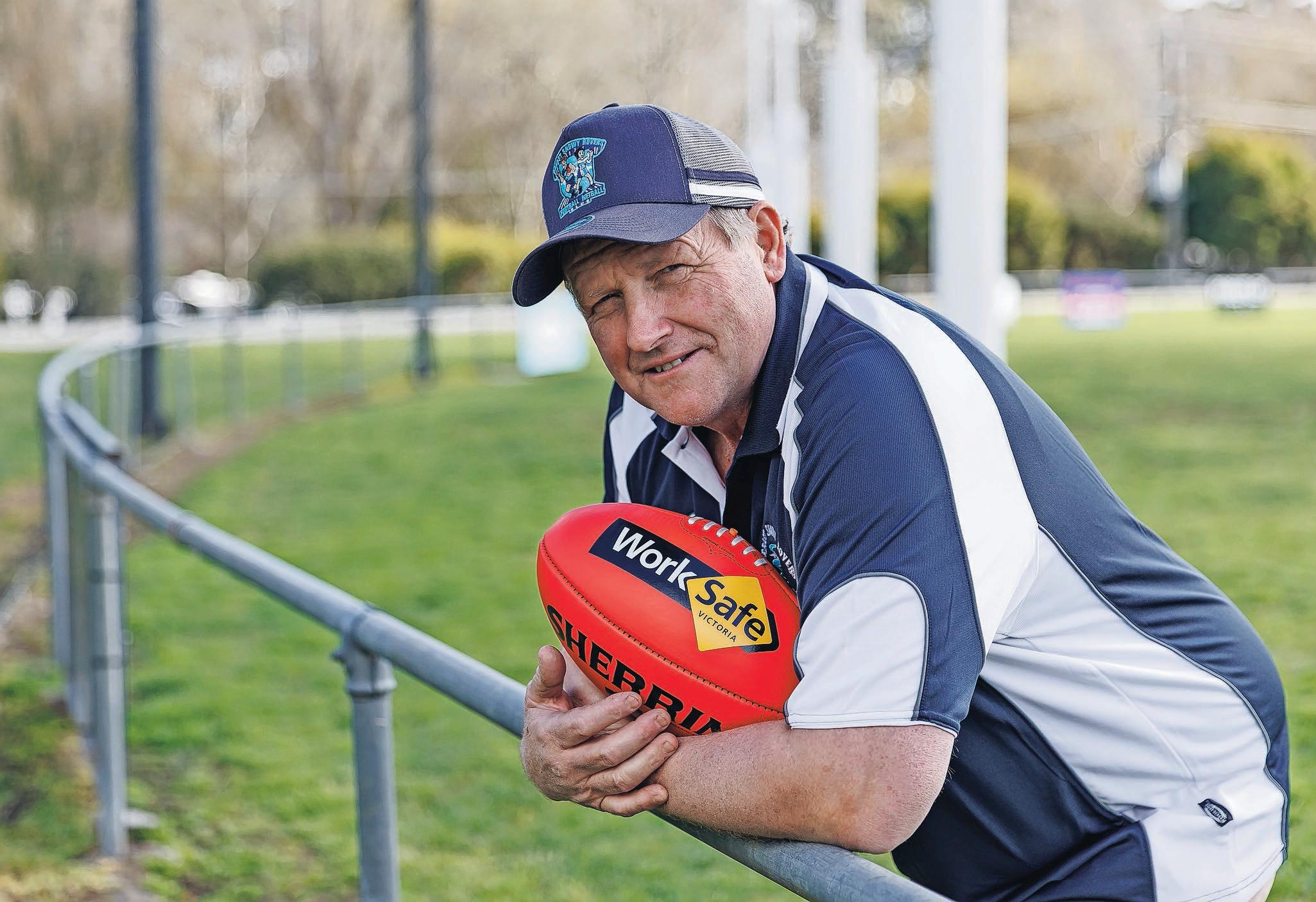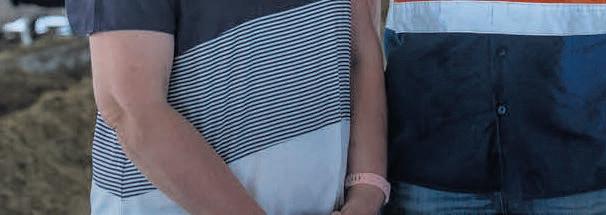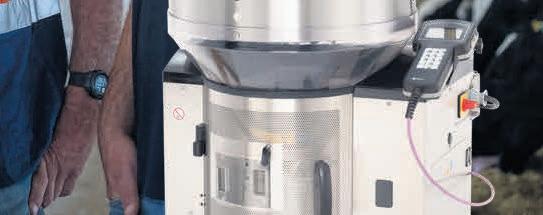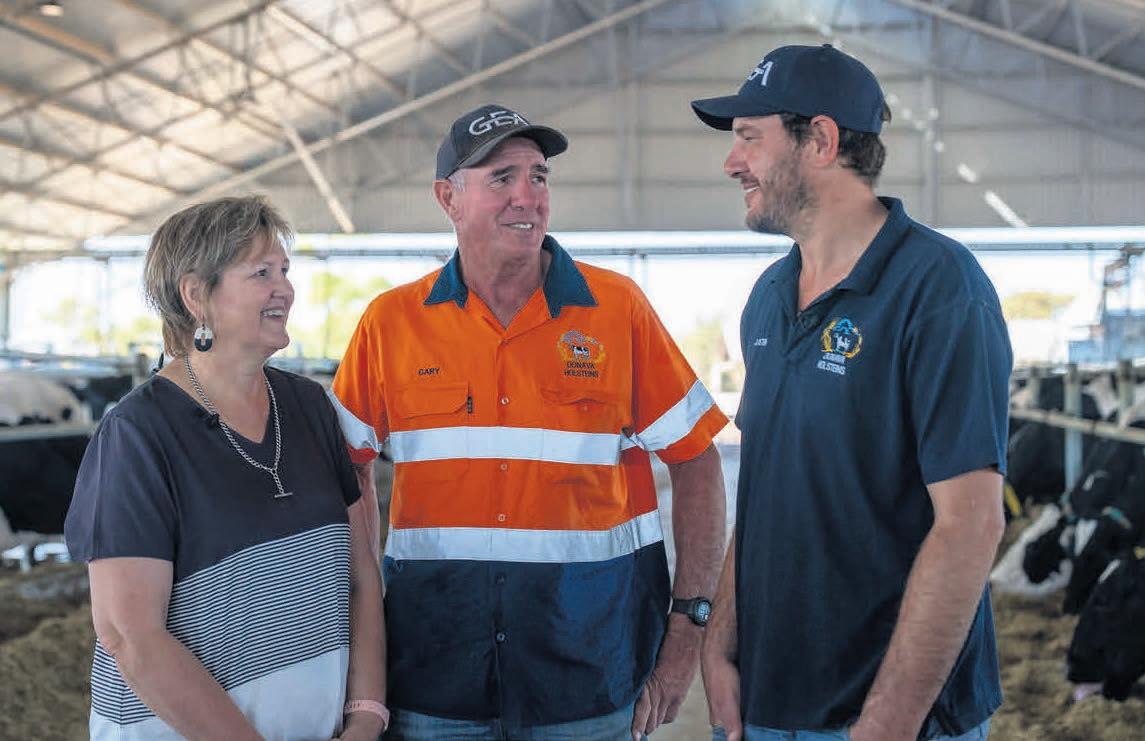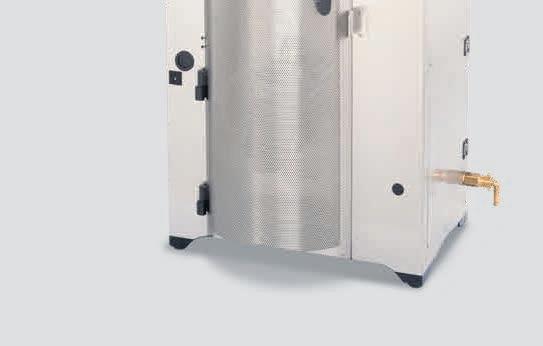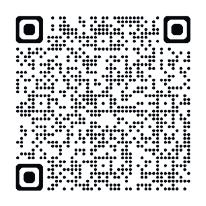GIPPSLAND REGION


BIG DAYS OUT

Sallie Jones from Gippsland Jersey, with Rowan Jones from Hallora (no relation), who stopped to buy a milkshake at the South Gippsland Dairy Expo. Pages 6 – 8.
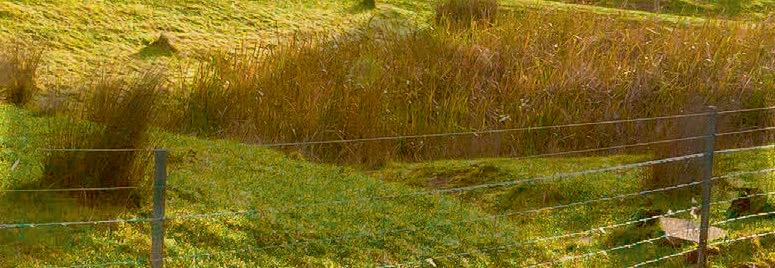
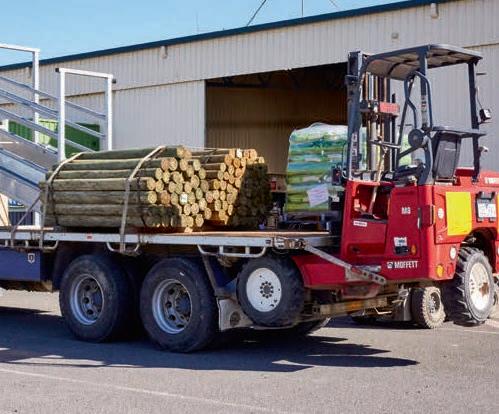










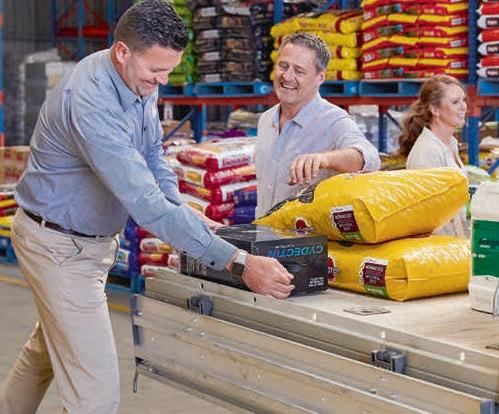

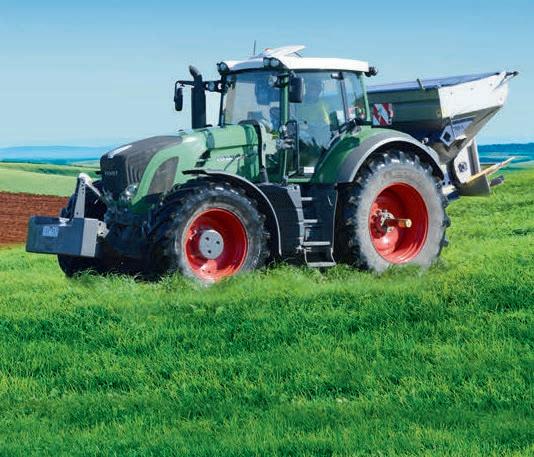

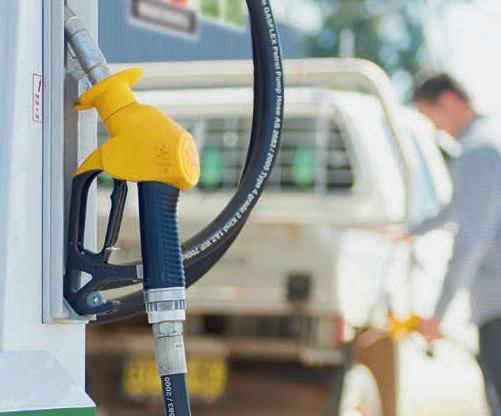

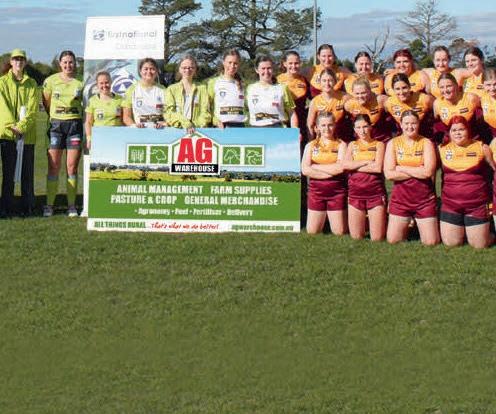
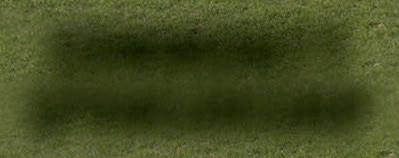




Sallie Jones from Gippsland Jersey, with Rowan Jones from Hallora (no relation), who stopped to buy a milkshake at the South Gippsland Dairy Expo. Pages 6 – 8.




















BY SARAH O'BRIEN
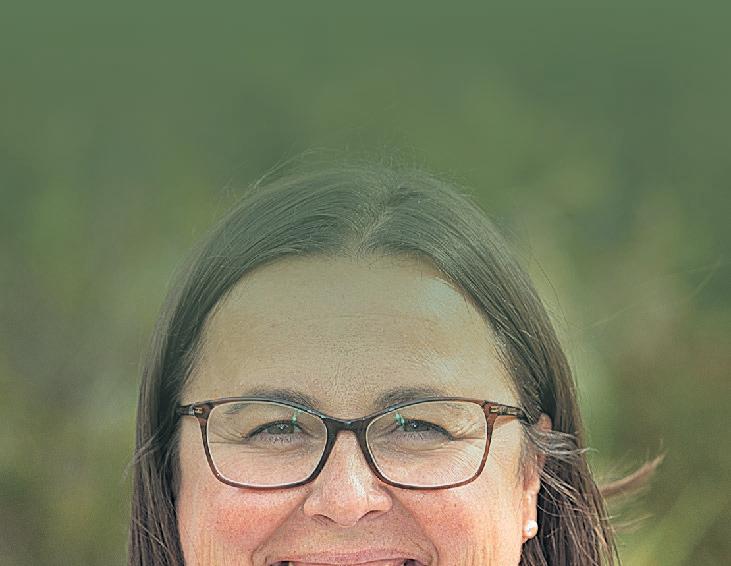
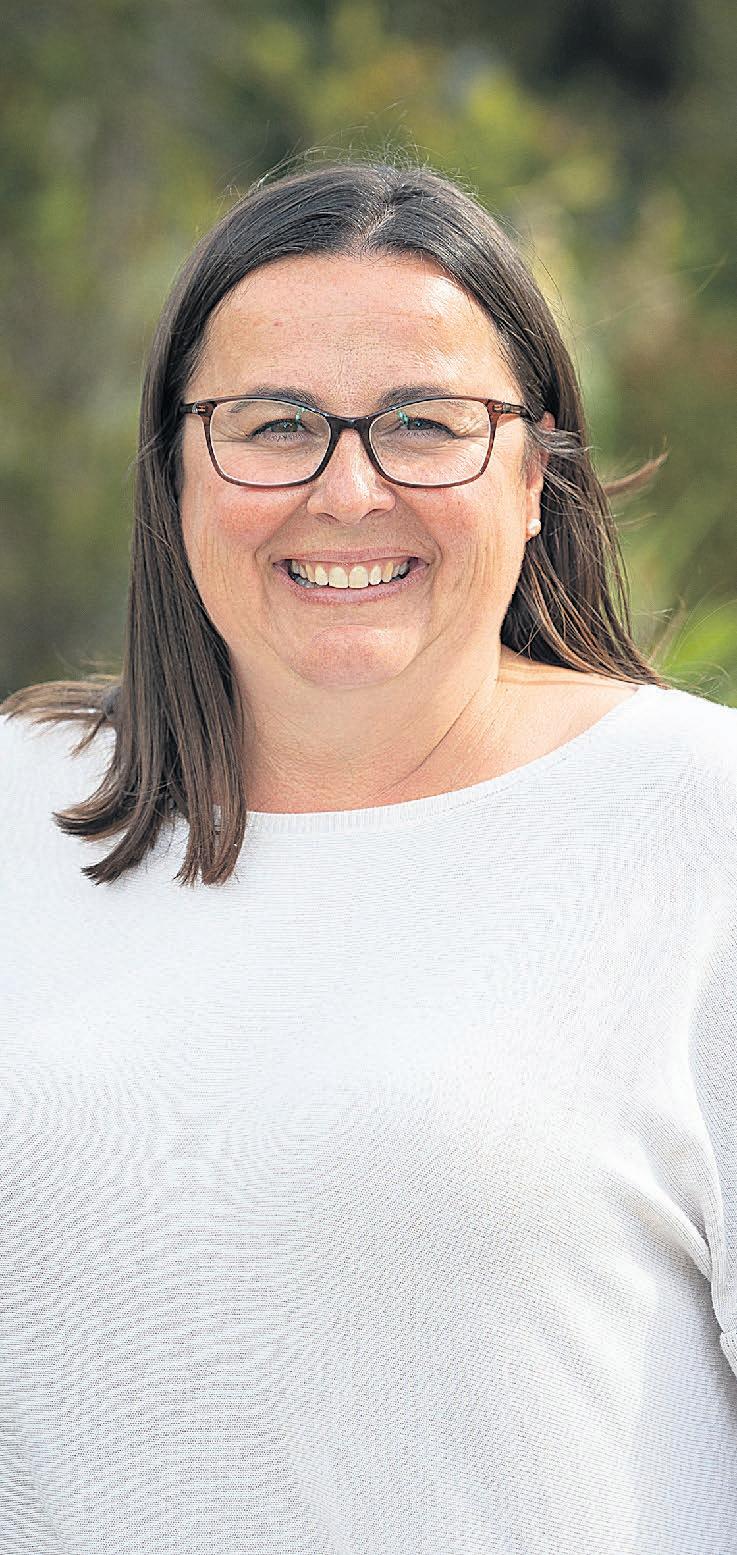
IT’S BEEN a busy calving season here in Gippsland, and now harvest and irrigation season are upon us.
While some parts of Gippsland are getting on with irrigating, others are still waiting for enough moisture run-off to fill dams.
I know how demanding this time of year can be on-farm, and I want to acknowledge the effort and dedication that goes into keeping everything running.
Amidst all this on-farm activity, I’m excited to share some updates from GippsDairy with you.
We’re proud to share our brand-new Strategic Plan 2025-2028
This plan sets out our goals for the next three years, focusing on supporting farmers, building resilience, and embracing innovation.
An additional strategic priority will also focus on the impact that collaborating with other industry bodies will bring to Gippsland, ensuring our region continues to benefit from shared knowledge and collective strength.
It’s been shaped by feedback from our dairying community, and we’re excited to bring it to life with you.
You might have heard about our Rethinking Q Fever project.
It’s all about raising awareness and making sure our dairy farms, families and farm team stay safe.
This plan sets out our goals for the next three years, focusing on supporting farmers, building resilience, and embracing innovation.
For those who contract Q fever, it can cause months of debilitating illness, and being vaccinated is the best way to prevent illness and protect our industry’s workforce.
GippsDairy initially attracted funding support from WorkSafe to vaccinate 600 dairy industry workers. We are currently discussing matching funding with Dairy Australia, creating opportunity for even greater impact.
If GippsDairy is successful the project will open up across Victoria, extending into the WestVic and Murray regions, taking this important work beyond Gippsland and into other dairy communities, increasing vaccinations numbers to 1000.
Further information on Q fever is available here: https://lrh.com.au/news/q-feverawareness-campaign-for-farm-workers/
A key part of the expansion will involve training more doctors to deliver the Q fever vaccine, with the aim of improving access for farming families and farm team members.
Importantly, the project will also provide a subsidised vaccination program for farmers,
with a goal of vaccinating 1000 people across the state to better protect our workforce and communities.
An Expressions of Interest is now open, and you can contact GippsDairy to register for your nearest participating medical centre on (03) 5624 3900.
The updated Extension Calendar 2025 is ready to go!
This handy resource maps out all the workshops, field days and events coming up across Gippsland.
It’s a great way to plan ahead and make sure you don’t miss out on opportunities to learn, connect and share ideas. You can pick a copy up when attending any extension event.
We’re also really looking forward to the Annual Ladies Lunch at Traralgon Winery on Saturday, November 16.
It’s always a highlight on our social calendar — a chance to relax, enjoy a delicious lunch, and celebrate the amazing contribution women make to our dairy industry and wider community.
Tickets are available now through the GippsDairy website, so gather your friends, fill a car and come along for a wonderful day.
Thanks as always for your support and for being part of Gippsland’s vibrant dairy community.
It’s your passion and hard work that makes this industry so special.
Sarah O’Brien is the GippsDairy chair.
The women of the Gippsland dairy industry are invited to an invaluable social opportunity to meet and network with like-minded individuals.
This year’s Gippsland Women in Dairy Ladies lunch is themed ‘Trailblazers in gumboots - Women driving change’, including a panel of amazing women sharing how they are driving change within the industry.
When: Friday 14 November 2025, 10:00am - 2:00pm.
Where: All Occasions Wedding and Functions Gippsland, Traralgon. Come along to meet these women and share personal stories of the achievements and change in Gippsland’s dairy community. For more information and to register your attendance, contact Belinda Griffin on 0428 020 810 or belinda.griffin@gippsdairy.com.au
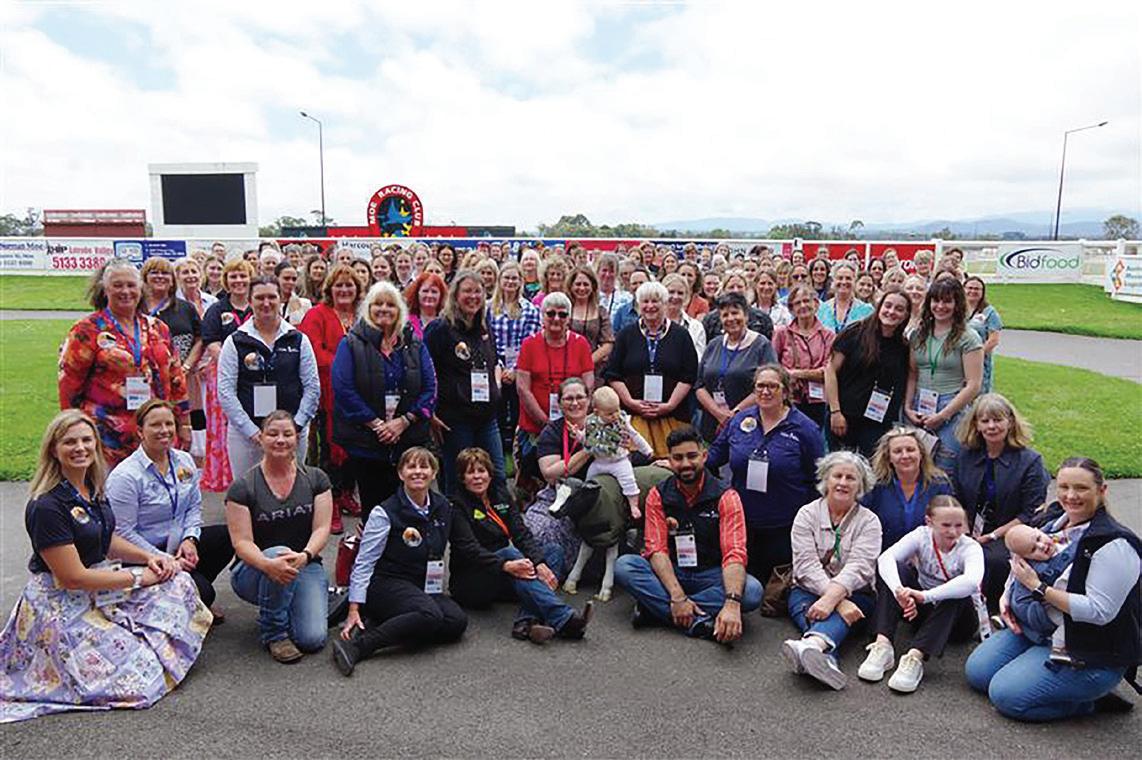
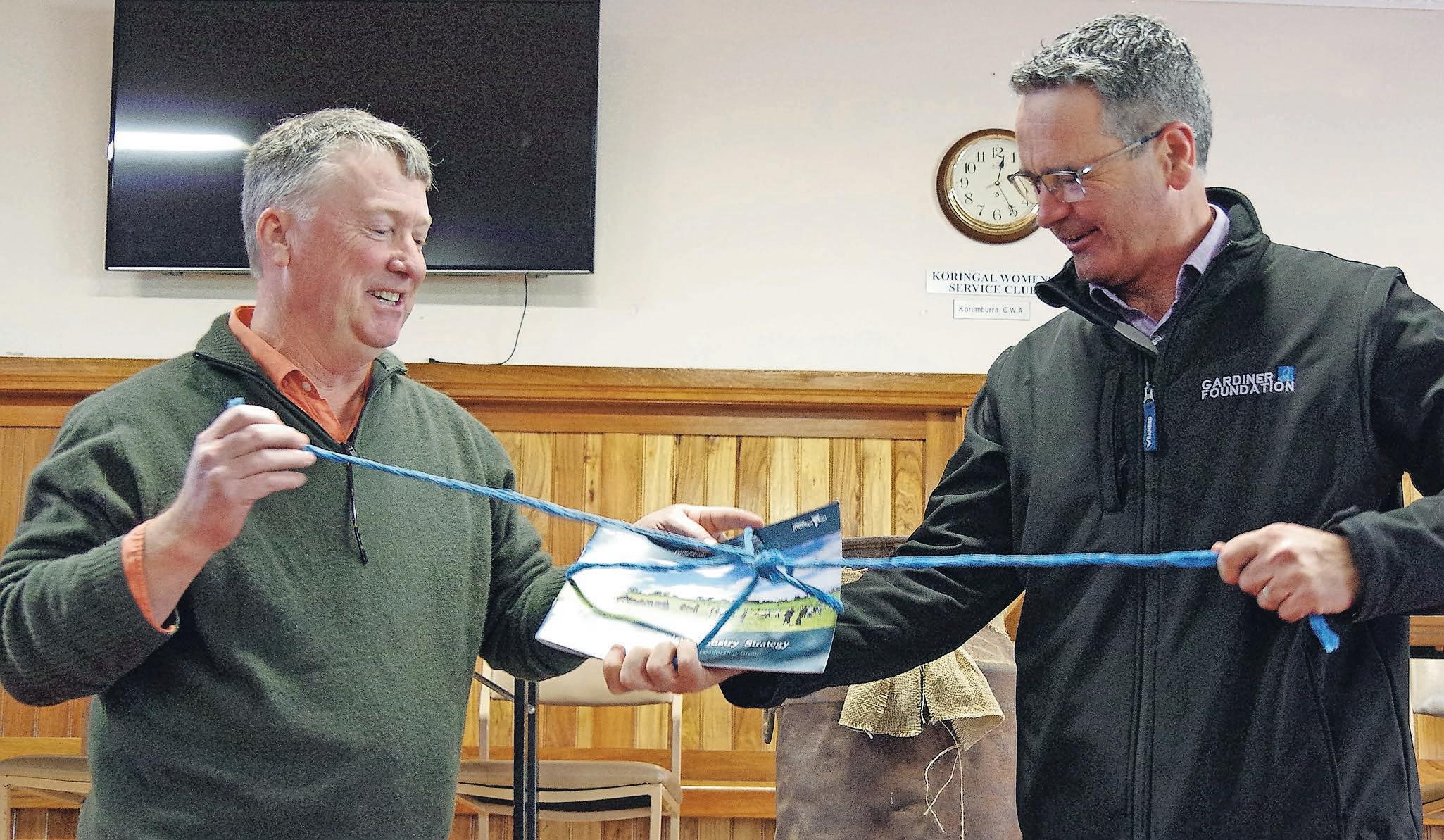
BY JEANETTE SEVERS
WITH A flourish, the ribbon was unfurled and the Gippsland Dairy Industry Strategy was launched at the South Gippsland Dairy Expo on September 3.
The strategy is a blueprint for future investment in Gippsland and is the culmination of months of consultation and input from dairy farmers and post-farm gate industry, and was led by GippsDairy and the Gippsland Dairy Industry Leadership Group (GDILG).
Proponents hope it will grow jobs by attracting investment into new and expanded milk processing and food manufacturing facilities in Gippsland, as well as underpin investment in technology, education and skills development, and transport and other infrastructure.
“This strategy is the first of its kind in Gippsland, a whole-of-industry plan spanning pre- and post-farm gate input,” said GDILG chair and Gippsland dairy farmer, Matt Gleeson.
The strategy aims to foster regional growth and investment, elevate the visibility and voice of the Gippsland dairy sector, and guide planning and decision-making across all levels of government, including local government, about infrastructure investment, resource allocation and regional economic development, for the foreseeable future.
Input was sought from dairy farmers, milk processors, industry and community organisations, catchment management authorities, local government, and relevant state government departments.
“The consultation engaged 166 stakeholders across the region through interviews, workshops and surveys,” Matt told Dairy News Australia in an exclusive interview.
“The strategy outlines the value of the Gippsland dairy industry, which employs more
than 6000 people across the region — approximately 2800 of those are on-farm workers and 3600 of them are working in the manufacturing and processing sectors.”
According to the Federal Government’s Jobs and Skills Australia data, the dairy industry directly employs 4.3 per cent of people working in Gippsland, with the agricultural sector the biggest employment provider in Gippsland.
Gippsland’s population is forecast to grow by 18 per cent by 2031, with the largest percentage expected to be within the employment population.
Matt said the dairy sector in Gippsland was a reliable industry for investment.
“Gippsland’s 1028 dairy farms produce 1.9 billion litres of milk annually, and that has been consistent for the past 20 years,” he said.
“The Gippsland region represents roughly 23 per cent of national dairy production.
“The dairy industry in Gippsland has significant regional impact, contributing $4 billion annually to economic growth in the region.
“That type of data supports the argument for increased investment, particularly in infrastructure for regional food processing, that could amplify the economic benefits for regional communities, through the multiplier effect.”
The strategy has set priorities for the next 10 years around the themes of improving people’s access to skills development and supporting career progression; enhancing economic resilience and prosperity at industry, farm, processor and community levels; supporting adoption of innovation and productive technologies and practices, maintaining best-practice environmental management across the industry, and proactively address society’s expectations of the dairy industry as a community partner.
“The dairy industry in Gippsland underpins regional prosperity,” Matt said.
“We don’t want this strategy to gather dust.
We’ve developed it to be a strategic industry document that can be used to support local government and industry plans to secure investment and build economic resilience in the region.
“If Regional Development Victoria or a Gippsland council sees a federal funding opportunity that they need a shovel-ready document for, this strategy provides a relevant socio-economic framework that can actually lever into that.
“We want this document to be referenced in a council’s work plan or when regional priorities are set by state and federal government departments.
“This document is a good opportunity to make dairy visible to councils and to government, and provides underlying data about income, resources, jobs and population.
“Because of this strategy, we can identify opportunities to do works in a saleyard or to improve traffic access, which also then benefits the community, not just dairy.”
Matt said the value of dairy to Gippsland justified aiming for investment in, for example, new and expanded milk processing and food manufacturing infrastructure.
“Gippsland’s dairy industry annually contributes a $4 billion value to the region and that’s a stable and mature product that gives us the strength to engage with other stakeholders and ensure their values align with ours,” he said.
“Gippsland is six different regions in one, and is a relatively stable supply within a relatively small transport footprint.
“There is a rain-fed opportunity, an irrigation opportunity, there are coastal and inland opportunities.
“That enables the Gippsland dairy industry to balance out its milk supply over its own region — if one or two regions are having a hard time, for example with significant weather
challenges, other regions balance that out with increased supply.
“Identifying that type of information in this strategy is beneficial in helping future investment come to the region, or stay in the region.
“Because, why shift milk out of the region to process it? It can be value-added to here and it can be branded and marketed that it’s coming from Gippsland.
“I’d like the next bit of dairy infrastructure to be built in Gippsland, instead of Gippsland’s milk moving outside the region. Then the multiplier effect of job security and that income, and money invested, could benefit the region in which we live.
“Having a document that is written like this strategy, that’s not just conversation, it helps to prosecute a greater, bigger story about why investment could be done in an area.”
Matt said the strategy also aligned dairy industry goals with broader community expectations around resource management, emissions mitigation and environmental stewardship.
“Dairy has to meet community expectations, managing our resources and the environment, mitigating our emissions, and meeting government targets,” he said.
“Our Gippsland Dairy Industry Strategy provides a valuable model for how traditional agricultural sectors can maintain their relevance and secure their place in regional industry planning and regional economic development.”
Lead funding for developing the strategy was provided by the Gardiner Dairy Foundation, with support from West Gippsland Catchment Management Authority, Regional Development Victoria and GippsDairy, and other stakeholders.
Hard copies of the Gippsland Dairy Industry Strategy are available from GippsDairy, and an electronic copy can be downloaded at: https://www.dairyaustralia.com.au/gippsdairy/reports
BY JEANETTE SEVERS
IN 2024, 45 per cent of the Q fever cases in Victoria were in Gippsland.
This statistic led to a one-year vaccination program in 2025 that has just been extended for two years.
A high number of agricultural workers in the dairy industry were among the three outbreaks in 2024.
Outbreaks of Q fever in all dairy regions were also higher in 2024, compared to previous years.
About half of the cases in Gippsland were reported among people in high-risk occupations for Q fever, such as farm workers, abattoir workers and those whose roles include contact with infected animals or animal products.
Calving seasons in the dairy industry proved a period for more outbreaks of Q fever, when exposure to birthing products and waste from infected animals is highest.
Fortunately, GippsDairy has gained additional funding to extend a Q fever vaccination program for the next two years.
The vaccination program is available to people aged 15 years and over. Pre-vaccination screening is required to ensure people haven’t already been exposed to the disease.
Q fever primarily spreads from inhaling air or dust contaminated with bacteria from birth fluids, blood or waste from infected animals, especially during birthing, slaughtering or butchering processes.
Q fever also spreads by direct contact with infected animal tissue or fluids on a person’s broken skin.
Environments where livestock are housed, or where animal waste is managed, pose a high risk of exposure to airborne particles carrying the bacteria.
In the latest health information, the bacteria can also spread by consuming unpasteurised milk from infected animals.
GippsDairy executive officer Karen McLennan told Dairy News Australia that the organisation has received additional funding for Q fever vaccinations because of increased diagnoses in Gippsland.
“Vaccination remains the most effective method to prevent Q fever,” Karen said.
“This year, funding from the Livestock Biosecurity Fund enabled Gippsland GP clinics to vaccinate 200 dairy farm workers and owners.
“The Livestock Biosecurity Fund subsidised the screening and vaccination program for 200 people.
“The screening and vaccination program has now been extended for two years, with additional funding from Worksafe Victoria.”
Karen said the GippsDairy board recognised that high staff turnover discouraged farmers from paying for workers to be vaccinated, and the cost of vaccination was also a barrier for individuals.
Those reasons led the board to lobby effectively for funding to subsidise the screening and vaccination program.
“Worksafe Victoria, under its workplace hazards program, recognised the value of subsidising Q fever vaccinations in 2026 and 2027,” Karen said.
Nambrok dairy farmer Jason Tharle knows the devastating impact of Q fever firsthand.
Jason milks 1300 cows and employs nine staff.
After contracting Q fever in 2016, he was unable to work for months while recovering from a severe form of the disease.
“I couldn’t work. It was that bad, I was stuck on the couch and couldn’t get off,” Jason said.
“I had to run the farm from the living room.
“It was like a really bad fever. I was drained of energy — it was like I’d lost all energy completely.
“It was fever, sweats and a massive headache. The headache was the big one [symptom].
“It got to the point where my eyes started going yellow and my skin went yellow. That was the disease shutting my liver down.”
Q fever can cause severe flu-like symptoms including fever, drenching sweats, headaches, muscle and joint pain and extreme fatigue. In rare cases, the disease can affect the lungs and liver.
About 10 per cent of people develop chronic fatigue-like symptoms which can last for years.
Jason said he thinks he contracted Q fever while calving-down a herd of infected cows. He continues to experience ongoing health effects.
Gippsland Region Public Health Unit public health physician Shereen Labib is urging eligible workers to protect themselves with vaccination, available through GPs for people aged 15 and over.
“Vaccination is the best form of protection, and it is safe and highly effective,” Dr Labib said.
“It is very important to let your doctor know if you are working in a high-risk occupation.”
She said Q fever could be diagnosed with a blood test and treated early with antibiotics
• Buying ALL types of cattle for export and local trade
• Payment on the day
• Animal husbandry and all-round advice
• Extra money for empty cows
• Over 50 years experience
TRADING HOURS
“Cow prices selling at solid rates… Fast money!”
Tuesday, Wednesday & Thursday 9am to 3pm.
Chris Cameron - 0418 512 503
Jodie Foster - 0437 004 566
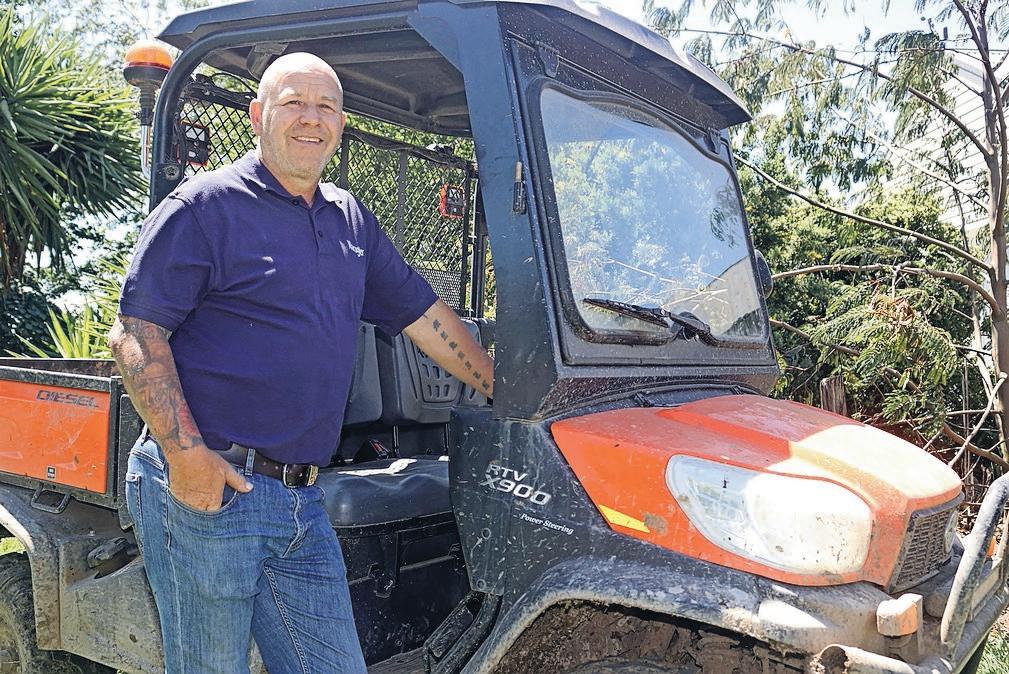
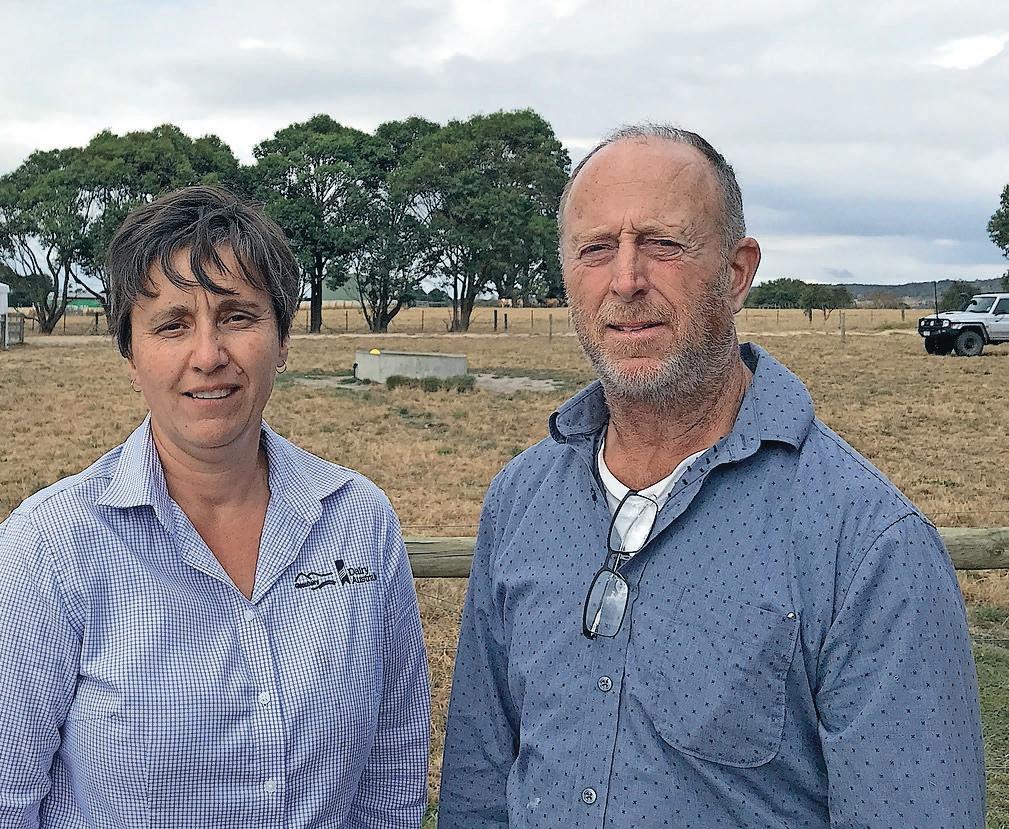
to reduce the severity and risk of long-term complications.
“Washing hands and arms thoroughly with soapy water after any contact with animals and wearing a properly fitted P2 mask and
gloves can also reduce the risk of infection.”
to improve awareness about Q fever.
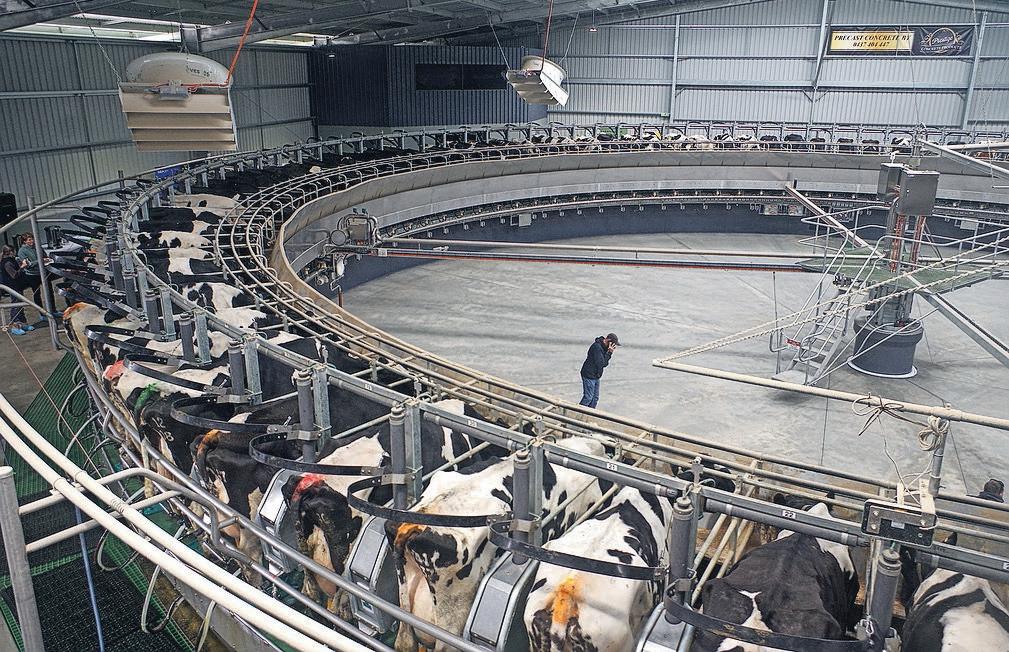
Mobile:0418 512 503
BY JEANETTE SEVERS
A $5000 grant to support drought mitigation measures has had poor take-up.
Administered by Agriculture Victoria, the grant can be applied to eligible expenses backdated to September 30 last year.
The grant supports activities including water carting, pasture re-establishment, water infrastructure upgrades — pipes, tanks, troughs and dams — and stock containment areas, as well as grain and fodder storage infrastructure.
AgVic’s Del Delpitiya and Scott McDonald, GippsDairy’s executive officer Karen McLennan and members of the Rural Finance Corporation were encouraging attendees at the recent South Gippsland Dairy Expo to apply for the funding.
“The take-up of the drought support grants has been very low,” Del said.
“We want to encourage people to apply for drought support grants.
“We also want farmers to utilise the free technical support, which also hasn’t been taken up.
“There is a list of advisers on the department’s website, who farmers can contact for one-on-one support.”
Farm business advisers, livestock nutritionists, soil and pasture specialists, water experts and veterinarians are among the advisers available. They can be booked for a three-hour faceto-face or online consultation, with a follow-up telephone call.


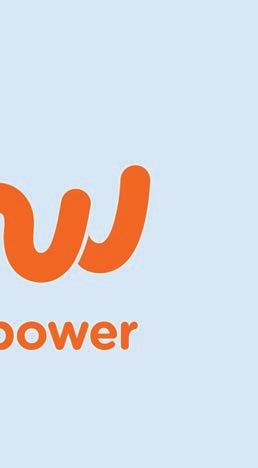

“As dairy farmers bring fresh cows into the milking herd in spring, they can utilise free advisers who can assess the productivity of their cows,” Del said.
“This is a valuable use of an appropriately qualified farm adviser.
“In some circumstances, advisers can also assess the farm business to enable the farming family to apply for farm household allowance from Centrelink.”
Mick Landry from Leongatha South said he had recently built a new dam, at a cost of $65,000.
He was unaware of government assistance, when he arrived at the NEX/Rural Financial
Counselling Service marquee at the dairy expo.
Trudi Laing, from RFCS, said the organisation was helping people to fill in the paperwork, although she said it wasn’t complex.
Trudi encouraged Mick Landry to apply for the $5000.
“There’s been little take-up of the grants,” she said.
Sandra Jefford from Clydebank said she was applying for the $5000 grant to help defray the costs of installing a pipe-and-riser system.
“We have a flood irrigation channel on the farm that wombats like and we were often repairing,” Sandra said.
“We’ve replaced it with a pipe-and-riser
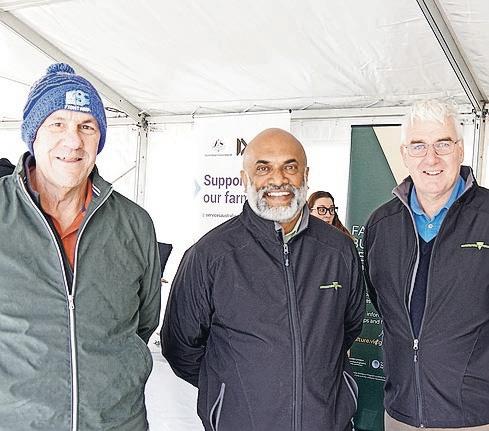
system. That costs a lot more than $5000, or $10,000, obviously.
“But recovering $5000 gives us money to do another project on the farm.”
Karen McLennan, from GippsDairy, encouraged all dairy farmers in Gippsland to apply for a $5000 grant to reimburse them for drought mitigation measures they have implemented.
The funding is available until June 2026, and is being allocated after individual applications arrive with Agriculture Victoria and are assessed.
“Dairy farmers can also take advantage of the three-hour consult one-on-one with an adviser, funded for any aspect of their business,” Karen said.
Burra Foods, a leading dairy producer, now sources renewable energy through a 10-year partnership with Flow Power and Ararat Wind Farm This sustainable solution supports its high-demand operations, cuts costs, and contributes to a cleaner energy future.
Go beyond peak and off-peak contracts by accessing cheaper, cleaner energy during daytime hours.
Shift energy-intensive operations to times of low electricity prices. Small changes can lead to significant savings.

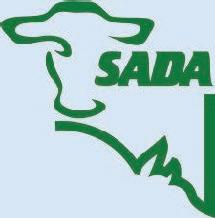
View energy insights and control your consumption in real time via our customer portal and hardware installed on site
Reduce your reliance on grid energy and generate and store your own electricity with rooftop solar and batteries
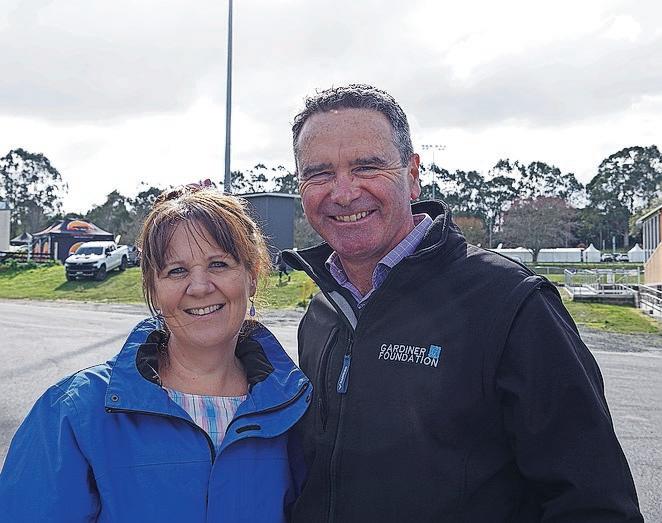
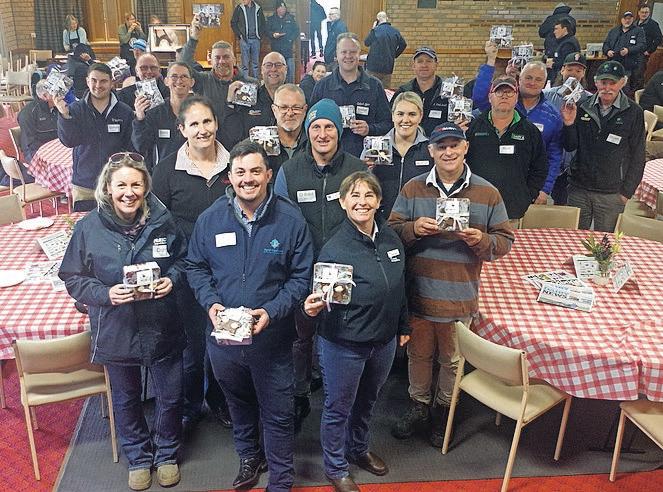
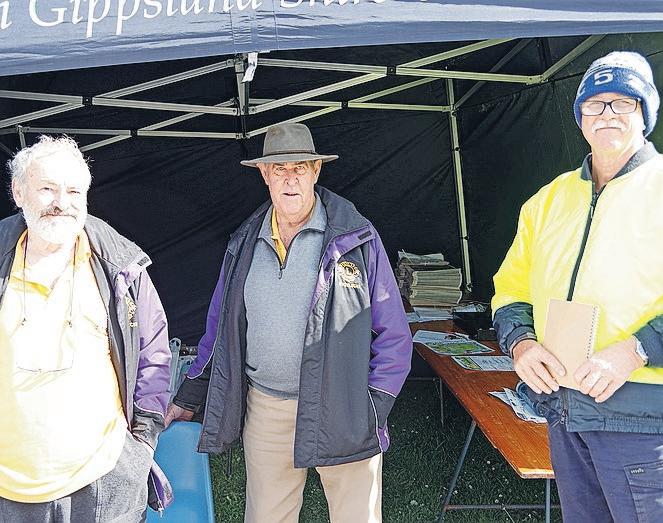
BY JEANETTE SEVERS
THE ANNUAL South Gippsland Dairy Expo has significant economic value to the local community.
Organised by the Strzelecki Lions Club, this year’s expo — the 26th — occurred on September 3 and 4.
The annual expo is recognised by the South Gippsland Shire Council as a key economic outcome for the region.
“The expo is the biggest trade event held in South Gippsland,” said Ken Fraser, South Gippsland Shire Council’s coordinator of economic development.
About 1000 people attended this year’s expo, with the largest attendance on the first day.
Organiser Deanne Kennedy said there were 1000 dairy farmers in South Gippsland, and every year about 700 to 800 of them attended the expo.
Members of the Strzelecki Lions Club initiated the idea of a dairy expo to serve the needs of South Gippsland dairy farmers, to bring the latest machinery and equipment to the region.
The Strzelecki Lions Club continues to coordinate the expo.
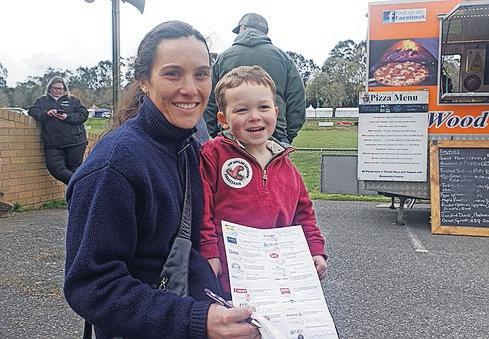
Funds raised from sponsorship and entry fees are contributed to the community.
“In the last 26 years, we’ve raised $700,000 for other community groups, by hosting the expo,” said Cliff Wallace from Strzelecki Lions Club.
“Last year, the expo enabled us to distribute $62,000 into our community.”
Deanne said the large number of gold sponsors of the expo, in particular, had boosted the amount of money raised by the Strzelecki Lions Club this year.
Sponsors are recognised on day two of the expo with a breakfast, acknowledgements and presentations.
Gold sponsors for the 2025 expo were Reid Stockfeeds, Dairy Protect, Rabobank, Dairy Australia, Evans Petroleum, NBN, ProDairy, Brandt, VicSilos, Green Mate agriculture, DeLaval, GEA, SRH milk haulage, Burra Foods Australia, Lely Center Gippsland, Tow and Fert, DPS dairy pumping systems, Saputo Dairy Australia and Easy Dairy automation systems. Silver sponsors were Poowong Dairy and Hardware and South Gippsland Shire Council.
For more photos from the expo, see our gallery at: www.dairynewsaustralia.com.au
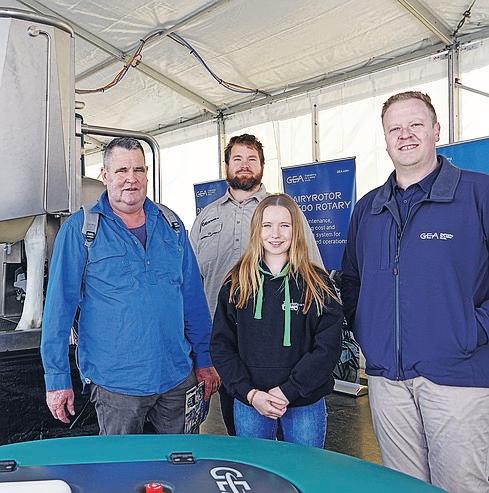
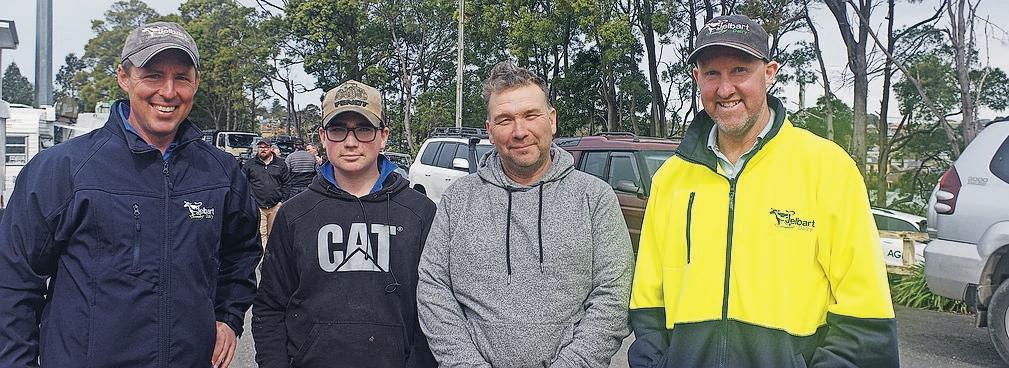

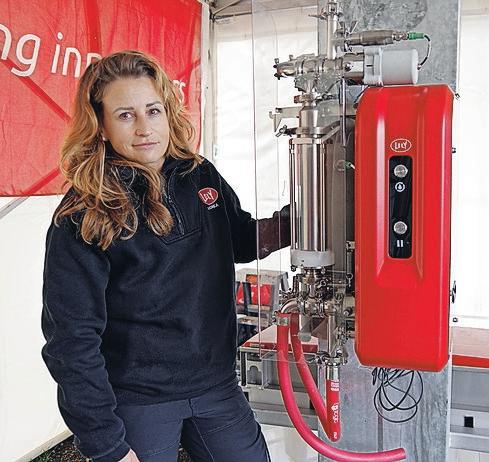
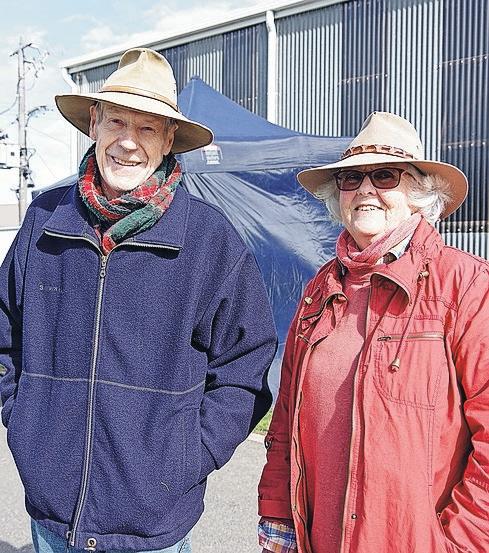
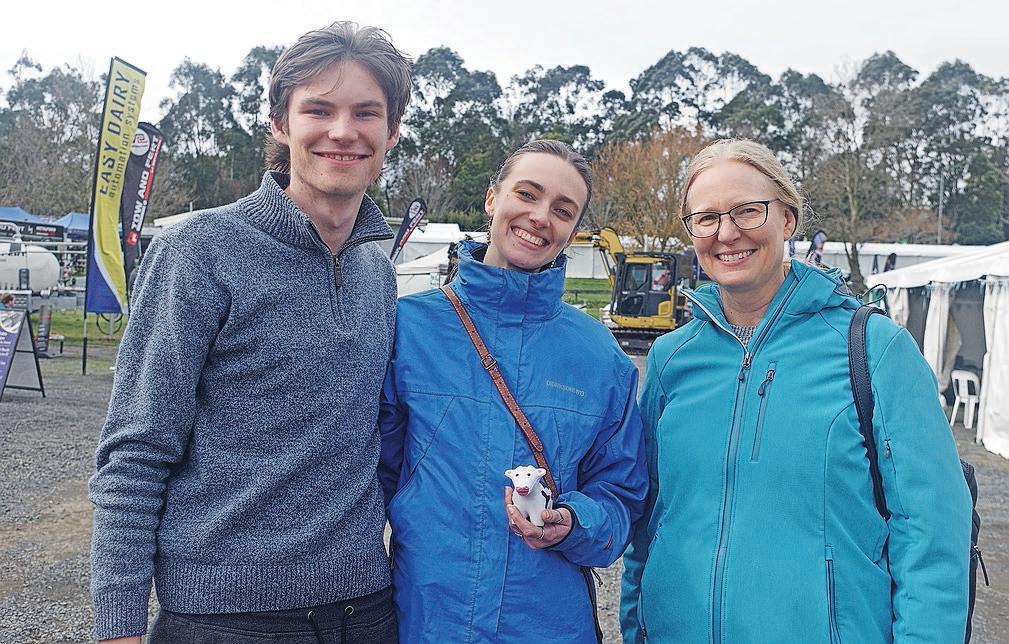
BY JEANETTE SEVERS
THE SOUTH Gippsland Dairy Expo has hosted a panel discussion for many years, led by farm consultants John Mulvaney and Matt Harms.
The intent of the panel has been to bring together dairy farmers and others in the industry to discuss a range of topics, that changed each year.
John was the original host, for a handful of years, and Matt stepped into the role and has made it his own for the past dozen years.
As the crowd gathers to hear the panel each year, the first thing everyone wants to know, is what character’s persona Matt will take on.
Characters have included a waiter, Donald Trump, Julius Sumner Miller, James Bond, Woody the cowboy, a magician, a monk, and a host of This Is Your Life.
This year didn’t disappoint, with Matt donning the costume of an Incredible.
This year’s expo was also Matt’s last year hosting the panel.
“I’m not retiring from working, I’m only retiring from hosting this panel,” he told Dairy News Australia
“It always happens at a time of year when I could take a holiday, if I wasn’t doing it. So next year, that’s what we’ll be doing.”
Matt said every year the process of choosing the topic or theme of the panel discussion began several months before the expo, held
in the first week of September each year at Korumburra.
“We identify relevant topics and discuss who would be a good panel member, before we decide what type of costume I want to wear,” he said.
“We discuss what’s topical and what people might want to hear about it, then we match our ideas to appropriate panel members.”
For Matt, standout panel discussions include one featuring young people in the dairy industry and another about pathways for industry growth.
“The panellists discussed understanding the barriers and limitations in knowledge for young people entering the dairy industry, as well as the importance of financial literacy,” he said.
“Financial understanding, wealth creation and business sense were recurring themes in the annual discussion.”
Matt recalled one particular session where the panellists talked about overcoming adversity.
“I could see people in the audience who were moved to tears from some of the information the panellists shared in that session,” he said.
“We always try to choose panellists who the audience will connect with, and with their reallife experiences.
“Everyone has a story to tell, and the panel format helps bring those stories to life.”
Matt said there are ‘pearls of wisdom’ that audience members quote back to him years after hearing them from a panellist.
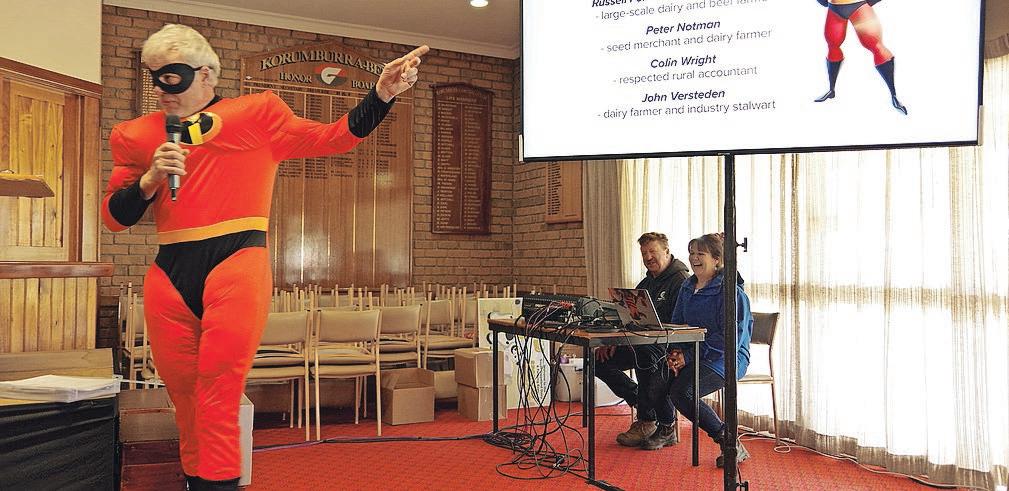

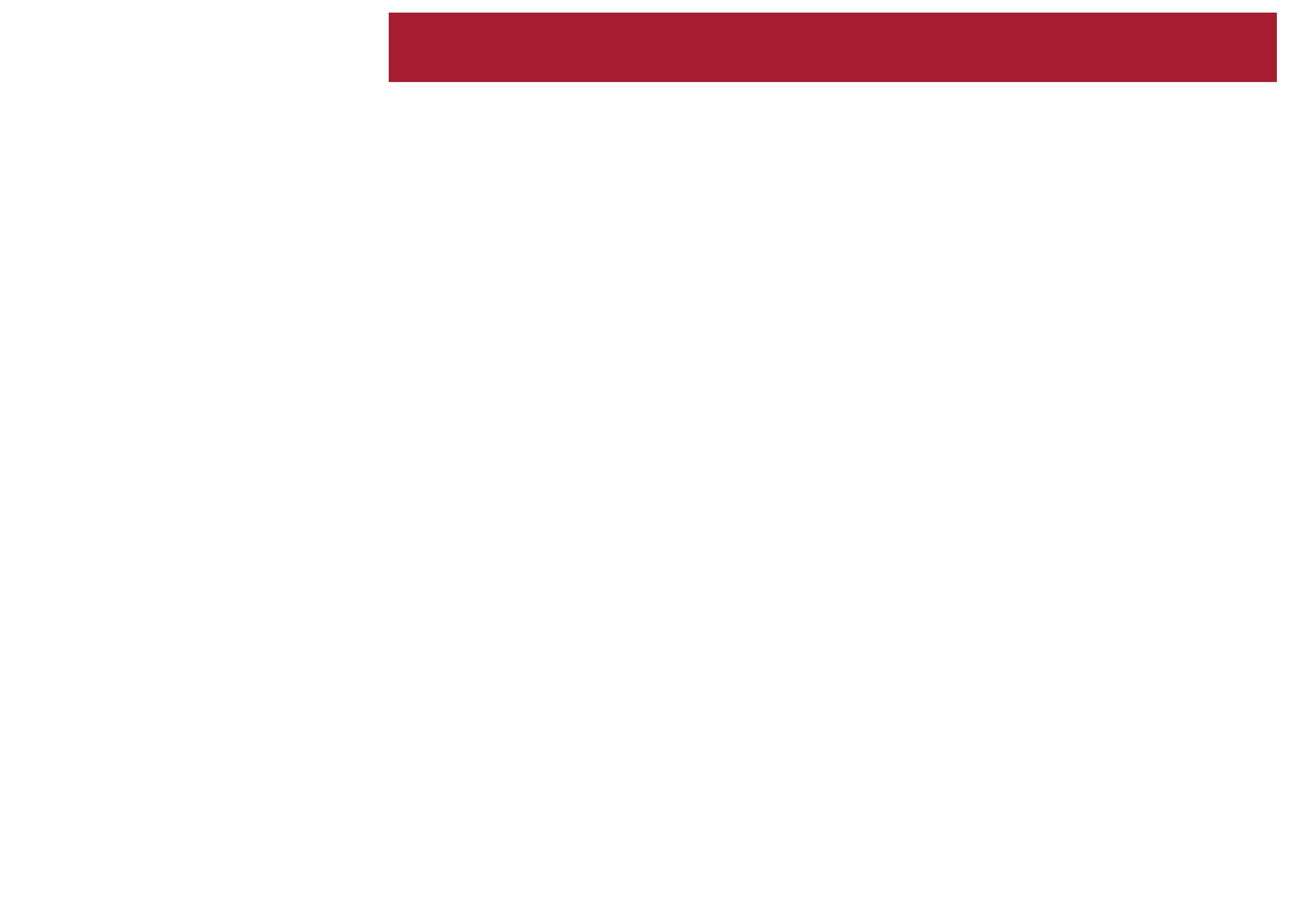
BY JEANETTE SEVERS
RAIN MEANT the track was ruled as heavy, but the annual Gumboot Gift ran anyway at this year’s South Gippsland Dairy Expo.
The 120m handicap race requiring competitors to wear gumboots, with separate heats for women and men, underwent a strict rule implementation this year.
“Different types of ‘gumboots’ have crept in to the race in recent years, so we’ve tightened the criteria,” said organising committee member Deanne Kennedy.
“We’re only allowing contestants to run wearing gumboots that are traditionally worn when working on the dairy farm.”
Race marshalls scrutinised the footwear of all entrants, intending to eliminate slimline, short-length, ankle and fashionable boots from the start line.
But some judicious promotion in the days prior to the race saw all gumboots comply with the entry code.
The prize pool for both the men’s and women’s races is $4000.
“It’s a very equitable race, because men and women race the same distances, on the same handicap starts, and receive the same prize money,” said Cliff Wallace, a member of Strzelecki Lions Club’s expo organising committee.
“The person who wins first place in each race receives $1500, with $300 and $200 awarded to second and third place,” he said.
“We’re fortunate that 17 expo sponsors contribute funds to support the prize money pool.”
The 120m handicap race has established itself as a standout event at the expo, with past winners including farmers, farm workers and triathletes.
The race handicap is based on age, with backmarkers aged 18 to 30 years starting on scratch.
Progressing by eight metres per decade of age, athletes aged 70-plus years old begin the race at the 80-metre mark.
Previous winners also receive a handicapped start, backmarked by 10 metres.
This year’s entrants turned up to race wearing everything from shorts, jeans and fit-wear to work trousers, flannelette shirts, T-shirts and hoodies. The only option missing was fancy-dress.
This year, 14 men entered the men’s race, and nine women contested the women’s race.
In the women’s race, Sarah Lewis sprinted hard from her start line to pass her competitors and take an early lead.
Sarah held on to her lead, and crossed the finish line first.
Sarah, from Leongatha, is a veteran of the race, and has contested it each time it has run since its inauguration in 2019. Sarah won the race in 2023 and 2022 and finished second last year.
Lauren Finger from Yannathan Heights was competing in her first race and started closest to the finish line.
She held on to second place for a long time after Sarah passed her, but was pipped into third place just before the finish line by a fast-finishing Abbie Hoiberg-Cox, from Warragul.
It was Abbie’s second time on the winners’ podium. She finished the race in third place in 2024 and improved that standing with a second place this year.
After the men’s race, they were all firsttime racers on the podium.
Simon Finger of Yannathan Heights
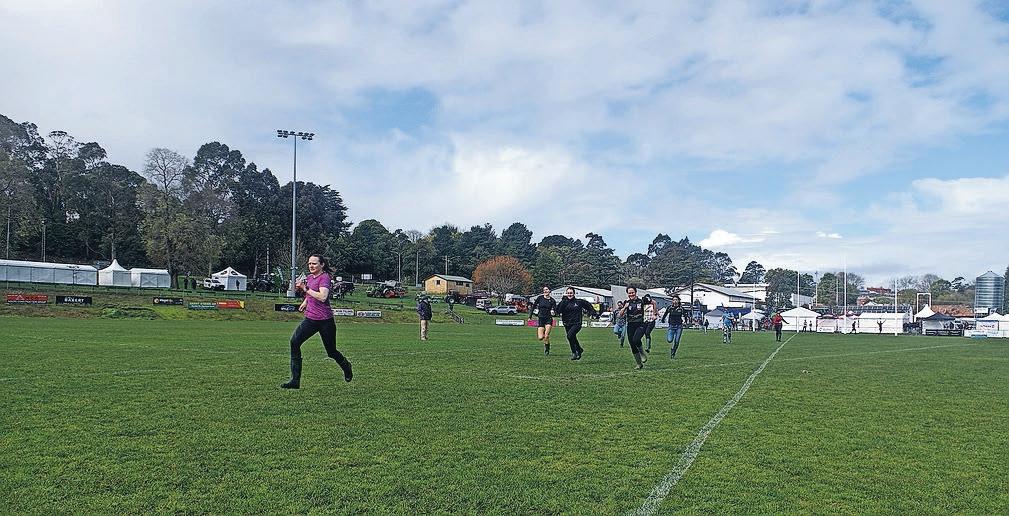
BY JEANETTE SEVERS
PASSING BY the McLennan Electrical display at the South Gippsland Dairy Expo, Dairy News Australia’s journalist noticed the marquee was branded with Central Gippsland Jersey Breeders Club.
At the same time, Luke and Mel Wallace arrived. There was a story to be told.
On Monday, September 2, during set up for the expo, the marquee hired by McLennan Electrical collapsed, needing replacement. While Josh Coombs and Simon McLennan were discussing potential solutions, knowing they would need cover for expected rain over the following days, Luke Wallace phoned Simon to discuss work he wanted done in the dairy.
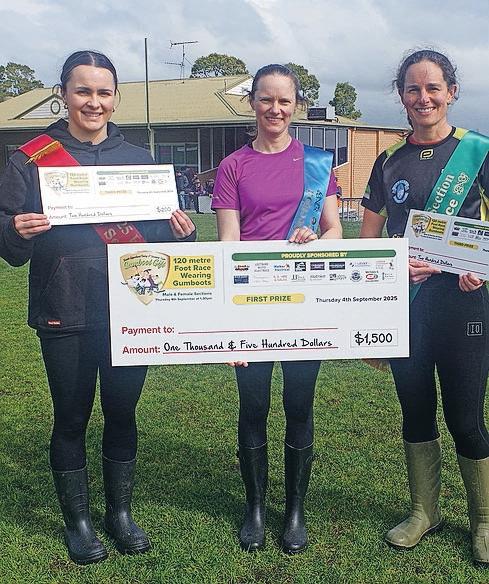

started in the middle of the field and had to run hard to clear himself from the rest of the pack.
He led the race from just over the halfway point and cleared the finish line with several metres spare.
Second place went to David Olsen from Drouin. David was caught at the back of the bunch for most of the race and had to negotiate his way around most of his fellow contestants in the final metres to cross the finish line into second place.
His final sprint to the finish line saw David holding his right hamstring after the race.
Third place went to Hayden Bull from Korumburra South after a close finish
between himself and another competitor saw the organisers review the race using video footage from Worker Bee Drones to confirm the outcome.
Husband and wife and first-time competitors, Simon and Lauren Finger, said they ran for the challenge of the race.
Lauren said they donated their winning cheques to a local family who are dealing with the challenge of cancer treatment.
Video of both footraces is on the South Gippsland Dairy Expo facebook site at: https://www.facebook.com/sgdairyexpo
The veterans’ race was cancelled earlier in the day after the usual competitors experienced injuries prior to the start.
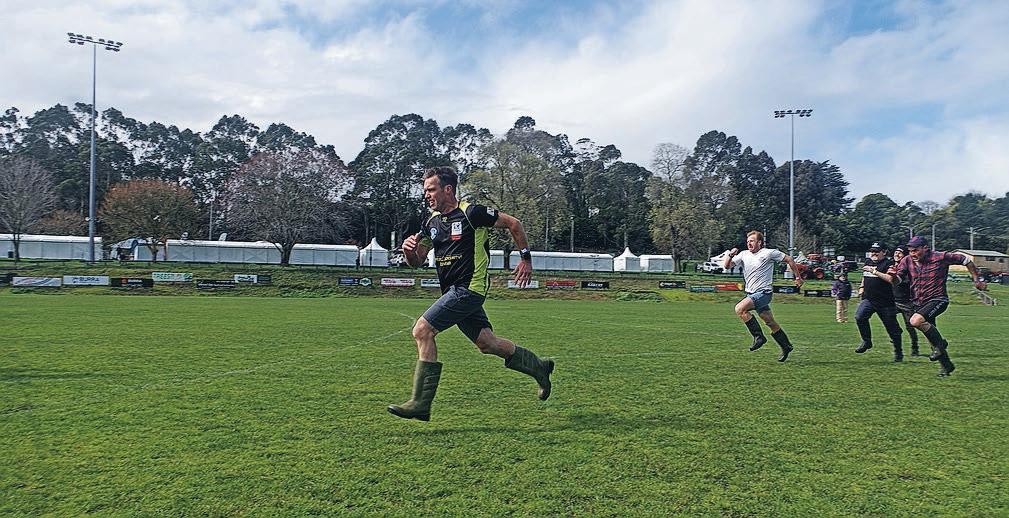
Simon asked Luke if he knew of an available marquee.
“I said, leave it with me,” Luke told Dairy News Australia.
“I had to check with a couple of people if the Central Gippsland Jersey Breeders Club marquee was available and if we could loan it to Simon and Josh.”
Luke phoned Simon soon after, offering the club’s marquee for the two days of the dairy expo.
“McLennan Electrical is also a sponsor of the Central Gippsland Jersey Breeders Club,” Luke said.
“We all look after each other in dairy.”
McLennan Electrical were able to display a range of generators, variable speed drives and motors, keeping dry during the cold and wet weather over the next couple of days.

